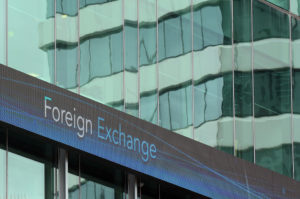In part one of my 2019 OUTLOOK, published in last month’s ALIVE Magazine, I offered my forecast for our domestic stock market and economy in 2019. Here, part two completes ERPE’s 2019 OUTLOOK with my expectations for the global markets and economy in the year ahead.
Global Markets
My Global Market Outlook for 2019 is thematically one of increased uncertainty. Uncertainty breeds volatility. Also, I believe, volatility brings opportunity. In 2018, volatility was the world investment market’s dominant driver of investor fear. Price swings were dramatic, especially in the 4th quarter as the year’s global stock market gains were erased in weeks. The role of increasing uncertainty and risk factors for investors pose challenges and opportunities in the year ahead. Although global GDP growth is expected to slow in 2019, economic fundamentals should continue to support earnings growth in equity markets, though most notably in the U.S.
U.S. equities are likely to outperform those in Europe and emerging markets in 2019, as investors face increased volatility amid rising interest rates and trade uncertainty.

U.S. equity return drivers are well supported by several factors, including increases in intended capital expenditures due to U.S. tax reforms, low unemployment, and share buybacks.
Political and economic uncertainty is causing risk aversion among global investors, who are demanding higher risk premia from non-U.S. markets. This risk / reward ratio will potentially lower demand for foreign stocks, which I expect to lead to attractive valuations in global companies. Security analysis will prove critical to investment returns resulting in an advantage to single stock selection over prepackaged funds. Any U.S. dollar weakness, downside surprises on U.S. economic growth, signs of Federal Reserve dovishness or a greater impact from China’s looser fiscal and monetary policy stance, could provide a catalyst for emerging markets and other global stock markets to strengthen.
Europe
European equities continue to be hamstrung by regional politics. Leaders in countries such as Germany, France and the UK are preoccupied with their own political survival. Brexit and the immediate financial risks presented by countries such as Italy fuel FUD (Fear Uncertainty & Doubt). This has weakened the energy needed to implement much-needed structural reforms aimed at protecting the eurozone from the next crisis. If Brexit negotiations result in a deal and populists fail to dominate May’s European Parliamentary elections, European markets could make progress in the second half of 2019. European growth remains reasonable and the European Central Bank is set to wind down quantitative easing and may even raise rates towards the end of 2019. Looking ahead to 2019 in the euro-zone financial markets, I expect it to overcome that headwind of the economic and political uncertainty and once again improve relative performance. I believe there is a case for global investors to be overweight in stocks in 2019 while remaining alert to increased tail risks. In such an environment, I recommend maintaining a global strategy as part of an overall investment portfolio allocation. Stay focused on stocks and regions with defensive characteristics, own companies likely to benefit from US economic tailwinds.
Japan

Japanese equities stand out as attractive, looking ahead in 2019. Japanese growth should see a boost from reconstruction efforts following a year of natural disasters in 2018, along with construction work ramping up for the 2020 Olympics. The Summer Games will be held in Tokyo. The tight labor market should provide a boost to consumption as wages start to rise. This should also bode well for capital expenditure as companies try to improve labor productivity. A key Japan event will be the consumption tax hike that is scheduled for October 2019. I expect Japanese bond yields to gradually edge up from a very low base, as inflation continues to slowly move higher. As was the case in 2018, the consumer will have a major impact on Japan in 2019.
Emerging Markets
Emerging markets (EM) relative equity valuations traded at all-time lows in 2018, with a discount to developed markets of roughly 70%, against a backdrop of trade conflict, idiosyncratic issues in countries such as Turkey and Argentina, fear of contagion and concerns about Chinese banks. Trade tariffs concerns took their toll, too. While the Fed continues to tighten monetary policy and the U.S. dollar remains strong, emerging markets are likely to struggle in aggregate. Earnings-per-share estimates continue to trend downwards for 2019 and will need to stabilize before strength in EM returns. Specific EM opportunities, namely China, could emerge later in 2019, if the risks already priced in to markets do not materialize. China has responded to the trade war with the U.S. by loosening monetary policy to stimulate demand, while Chinese banks are trading close to the low levels not seen since the global financial crisis of 2008. Chinese equity valuations in general are very low. However, Chinese retail sales rose 9% year-on-year in September, and fixed capital investment (think investments in factories and infrastructure) has gone from roughly 44% of GDP to 48% in just five years. As I said in my 2018 OUTLOOK, China, in my opinion, remains positive. Trade and tariffs will tell.
The winds of change are already blowing strongly on the global economic landscape. I expected global growth to slow this year, and that is being manifested now. Global markets are still vulnerable to fears that a downturn is near, even as the real risk of a U.S. recession is low in 2019. A general slowdown in the pace of world economic growth will not necessarily be the end of global economic expansion.
The takeaway is with increased uncertainty in 2019 there will be an increase in volatility, as already seen in the first days of the new year. With that will come investment opportunity.
Invest wisely.
Leave a Reply